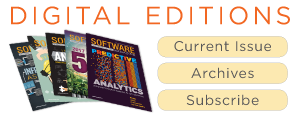05.26.2015
Parascript, the industry innovator in advanced data location, extraction, and classification, today announced the next generation of document classification software. Parascript Document Classification 2.0 empowers business users to leverage auto-classification without programming experience.
“We’re placing the power of document auto-classification in the hands of business users,” Mark Gallagher, Vice President of Sales, said. “On the one hand, you don’t have your team spending hours manually reviewing and organizing documents in the system. On the other hand, you don’t have to employ a team of programmers to auto-classify your documents. It’s advanced classification functionality that’s straightforward to use.”
Parascript Document Classification 2.0 advances classification beyond batch classification, which is limited to organizing pre-defined sets of documents in an established order. Unlike other auto-classification solutions, Parascript Document Classification 2.0 provides the following unique benefits:
HIGH ACCURACY CLASSIFICATION. Most classification software relies on one type of classification method over another, which limits the types of documents and how accurately they can be processed. Parascript drew upon its advanced data location and extraction techniques along with its state-of-the-art image analysis capabilities to develop Document Classification. It automatically applies multiple techniques including algorithms that process visual, text, or glyph-like elements such as signatures or logos in order to classify documents based upon all the available information. All of this allows results to be highly accurate with very low error rates.
DISCOVERY VIA AUTO-CLASSIFICATION. Large organizations have many different types of documents and need to avoid expending employee resources to identify all document types. When applying Parascript Document Classification, it’s not necessary to manually review repositories for samples. By document clustering, the software groups documents automatically without samples. Once samples are identified, it is no longer necessary to have examples of every document variant. For example with invoices, Parascript Document Classification can use a few samples, after which it can classify an invoice as an invoice and any variation of that invoice.
DYNAMIC ORGANIZATION AND ONGOING MAINTENANCE. Engaging the organization’s Subject Matter Experts (SMEs) to organize, classify, and maintain the taxonomies with ever-changing business rules are highly labor-intensive, ongoing activities that divert SMEs from their core tasks. Parascript Document Classification is automated and trainable. With a few samples, the software automatically learns the features of a particular document class. The software applies the rules so that users don’t have to, establishes the necessary metadata, and is rapidly trained to classify hundreds of different documents all in random order.
RAPID SET-UP AND EASE OF USE. Organizations can be up and running with advanced classification capabilities in weeks not months. SMEs can use Parascript Document Classification without any programming or coding background.
“For the first time, enterprises can affordably and effectively address their document organization workload,” Greg Council, VP of Marketing and Product Management said. “With Parascript Document Classification, enterprises gain a comprehensive understanding of their document data lakes so that business users no longer expend resources manually organizing and reorganizing documents. Document data can now be optimally used, governed, defined, and secured.”
Auto-classification is included in the general availability of Parascript Document Classification 2.0 and also available as an option with FormXtra Capture 6.1.
parascript.com

